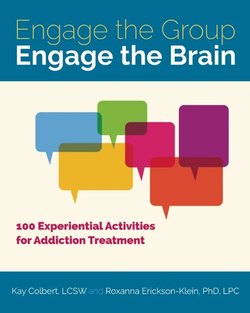Читать книгу Engage the Group, Engage the Brain - Kay Colbert - Страница 7
На сайте Литреса книга снята с продажи.
ОглавлениеForeword
This highly innovative volume, Engage the Group, Engage the Brain: 100 Experiential Activities for Addiction Treatment by Kay Colbert and Roxanna Erickson-Klein, brings a refreshingly new neuroscience approach to psychotherapy. It embraces a long tradition for facilitating the shift in the burden of responsibility in effective psychotherapy, first celebrated by Roxanna Erickson-Klein’s father, Milton H. Erickson, MD. The main idea is that the truly creative inner work of psychotherapy is the burden of the patient, not the therapist (American Journal of Clinical Hypnosis, Vol. 6, No. 3, 1964).
While popular lore tends to promote the therapist as the heroine of the psychotherapeutic encounter, there is a long tradition of innovative professionals like Colbert and Erickson-Klein introducing new attitudes and techniques for facilitating a person’s own creative development in optimizing his or her own path of self-transformation and recovery. Consider how more than 100 years ago Sigmund Freud introduced free association and emphasized the patient’s own dreams as harbingers of the path to self-discovery and healing. Consider how Carl Jung introduced active imagination as a key for unlocking the person’s own spiritual life as an inner guide to self-fulfillment. In our time, consider how Carl Rogers introduced the simple reflection of the client’s actual words and concepts as the focus for facilitating the highest levels of attention, self-understanding, and problem solving.
Colbert and Erickson-Klein now expand this innovative tradition by introducing 100 experiential activities for addiction treatment and rehabilitation. It is their emphasis on experiential novel and numinous activities that makes their approach a wonderful therapeutic application of the new neuroscience research on memory, learning, and the creation of new cognition and consciousness at the molecular-genomic level of brain plasticity and stem cell healing. Although they began this work in a local nonprofit limited to women, we can safely assume it is only the beginning of a therapeutic journey. We all look forward to the eventual extension of their creative work to all people, all cultures, and virtually all the stress-related disorders.
Ernest Lawrence Rossi, PhD
